9 Quick Tips To Help You Become a Better Illustrator
 “BELLE” ©2021 CHIZU
“BELLE” ©2021 CHIZU
1. Take advantage of references!
Don’t guess when you don’t know how to draw something. It might seem tedious or time-consuming, but building knowledge will make you faster and more efficient in the long run, and with experience, you’ll accumulate enough of a mental library to draw from your imagination.
It’s better to know the rules before you break them, even if you’re going for stylization. Instead of copying one ref directly, try finding several refs of the same object or situation so that you really understand how it works—I like to take my own photo refs when possible, and I also keep multiple boards on Pinterest so that I can draw inspiration from various different sources.
From Aliya Chen
Aliya Chen is a young up-and-coming illustrator based in Los Angeles. After winning the grand prize in the Illustrators of the Future contest, she joined Netflix Animation as a visual development artist.

2. Spend time analyzing your work
Analyze your own work extensively! Since I started my Patreon page 6 years ago, I’ve recorded the process for almost all my paintings. I’m never quite sure if an image will be successful or not, but if I hit the jackpot, I’m happy because I can go back and examine every step I took to see what I did right.
It works the other way around, too. I can analyze my bad paintings and learn what I shouldn’t do again.
The best solution for recording these videos is OBS Studio. Also, when I finish a painting, I go back to make a new folder with about 10 or 15 step-by-step JPGs from the initial sketch phase all the way to the final and using an image browser (XnView), I can quickly go through all the steps and see how my painting evolved which is excellent if you want to dissect your workflow.
From Andreas Rocha
Andreas is a freelance concept artist from Lisbon, Portugal. He specializes in fantasy and science fiction and regularly works with clients like Epic Games, LEGO and Wizards of the Coast.
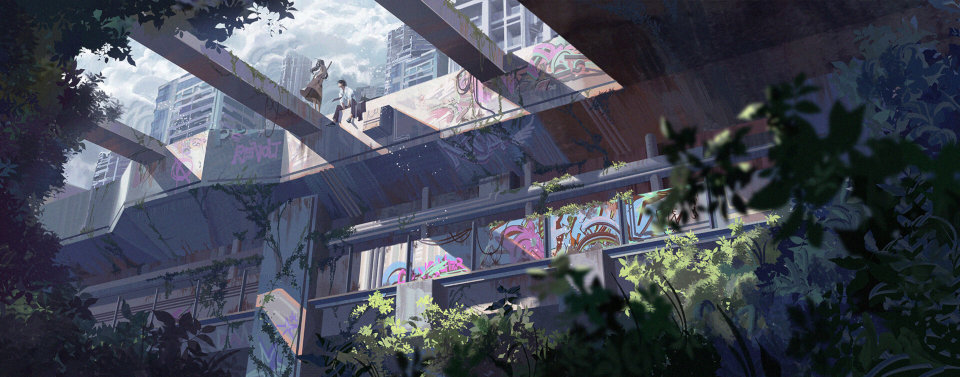
3. It’s great to draw what you’re passionate about, but don’t neglect your weaknesses!
When you’re passionate about something, it clearly shows in the work you produce, and that’s a great thing. The problem is just how easily we can fall into a comfort zone and only draw subjects we’re familiar with.
If you catch yourself doing this, don’t be afraid to work on areas you might be weaker in, and try out unfamiliar styles!
If you’re strong in environment painting, practicing portraits can still help your understanding of form. If you’re strong in characters, trying environments could inform composition. Or, try out different lighting setups, perspectives, and subject matter within your own style as well. In the end, even if you don’t adopt a new technique, it will definitely expand what you know.
From Felicia Chen
Felicia Chen is a Chinese-American visual development artist currently working at DreamWorks. She grew up in Sacramento with her twin sister Aliya before they decided to dive into visdev together.

4. Challenge yourself by switching between digital and traditional art
A great way to stay motivated and consistent while still challenging myself was to go back to my roots and take up traditional painting as an everyday exercise. Whether I’m just making a quick drawing or spending the entire day on it, the process, satisfaction, and even the frustration that comes with it help me find new ways to solve problems or apply new knowledge in my digital work.
If you’ve seen my traditional work, you’ll know I tend to use a lot of different art equipment. The process for every material is very different, e.g., When you’re painting with watercolor, you go from light to dark, but if you’re using acrylics or gouache, you can do dark to light, etc. I’ve learned to apply these processes and the kinds of results they can offer to digital as well, so it’s been really beneficial!
From Vanessa Morales
Vanessa Morales is a freelance concept artist and illustrator with a deep love of nature, the whimsical, and fantasy.
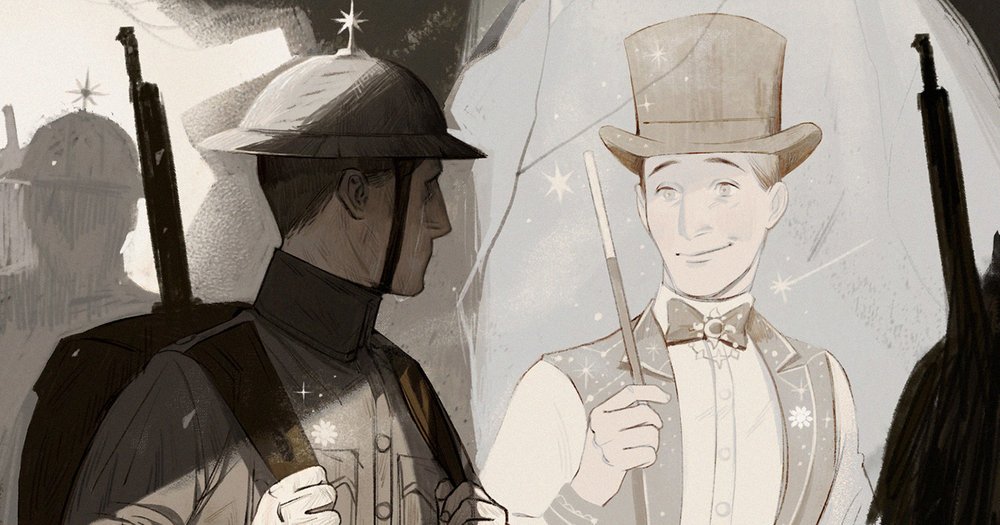
5. Compositions techniques and ideas
I’ve often loved playing around with compositions to make an illustration more appealing. It challenges you to solve flaws in an image and makes your work look more visually exciting and stimulating. Composition techniques are commonly used in films, but it also works for illustrations, games, and comics.
There are many types of compositions out there, e.g., Rule of Thirds, Golden Spiral, Focal Mass, Spiral Section, Harmonious Triangles, etc. So to learn and apply these techniques, it is important to analyze them accordingly. Each composition works in a different way and helps to visualize an idea properly.
Before starting on a new illustration, jot down your idea, come up with a few composition drafts, and then finalize it once you’ve found a desirable composition. Using this correctly would make your work stand out and look more aesthetically pleasing.
From Yvette Chua
Yvette Chua is an illustrator based in Singapore who is currently producing her first graphic novel (Field of Sunflowers).
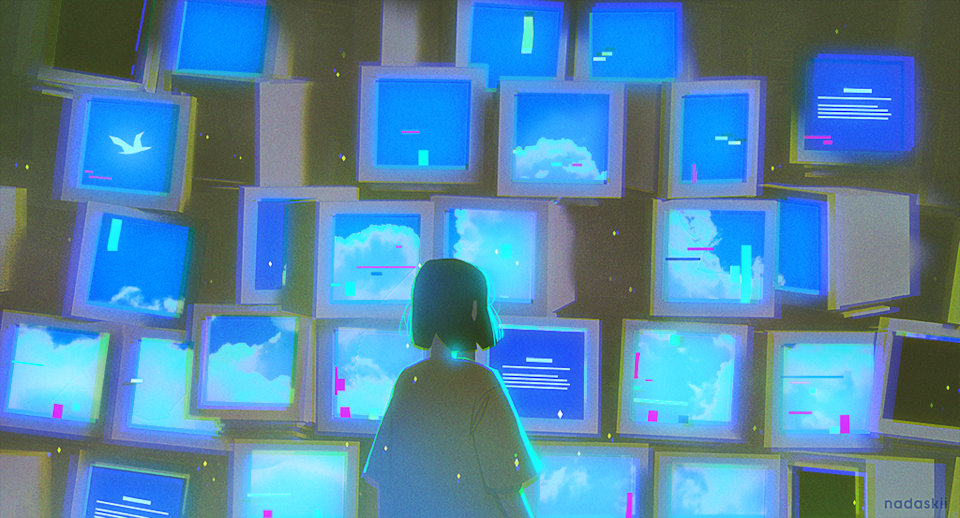
6. Sometimes the answer is simple!
Whenever you’re about to draw something, try to break it down into its simplest form first, no matter what object or style you’re working with.
I like to group my shapes into big, medium, and small when drawing. I try not to stress about tiny windows or tree leaves initially because I know that once the bigger shapes are painted and I gradually move on to detailing, everything will feel much less overwhelming.
This taught me to see the bigger picture; otherwise, it’s like working with a micro lense intensely zoomed-in on one spot, and when you zoom out, it is rarely a good result. For that reason, I always like to keep a second tab of the zoomed-out artwork open to see the bigger picture and overall composition.
From Nadaskii
Nadaskii is a self-taught illustrator who began learning about digital art while living in Morocco in 2015. Since then, she’s found her niche by focusing on visual storytelling and capturing subtle emotions through light and color in her images.
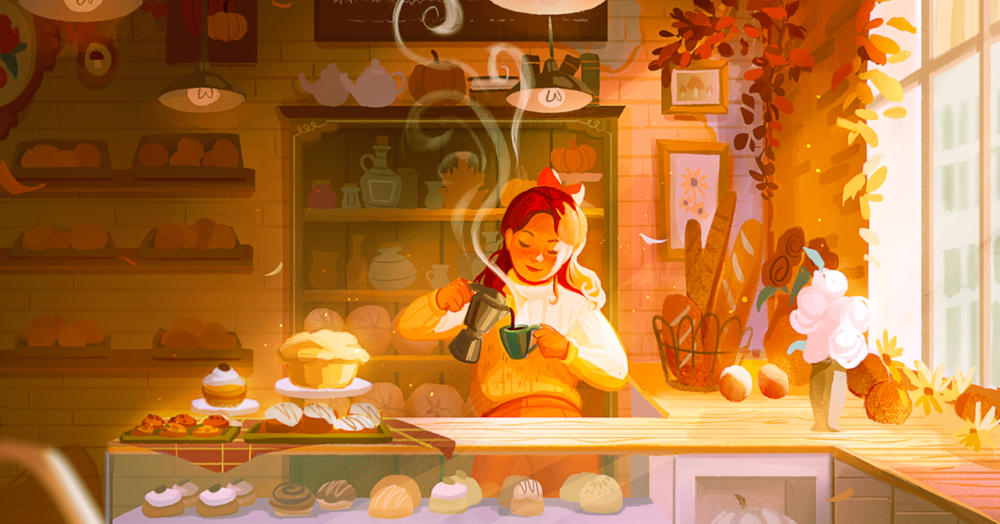
7. Take inspiration from different sources and look beyond your own field
Make it a habit to step outside your own field and take inspiration from other interests. Whenever I look for inspiration, I like to pull ideas from different sources.
One of my biggest inspirations is photography. I take my time to learn how my favorite photographers work; how they convey light and capture their subjects. I like to apply some of the elements I’ve learned from them to my own work.
Look outside of your field and see how you can include different interests in your art—not only will this help you bring fresh new ways to your creative process, but it will also help you stand out!
From Maxine Vee
Maxine Vee is an artist and designer from Toronto, Canada. She runs her own online store and enjoys drawing whimsical illustrations, environments, and characters.

8. Your differences are what make you unique
You often see illustrators who are embarrassed by the kind of stuff they enjoy or the influences they draw from in their artwork. I say that the things you like set you apart from everyone else. If you combine experiences from your personal life and viewpoints of the world along with your own tastes, it always ends up making your vision unique—and people love to see that.
We all have a gut instinct that can detect art coming from a sincere place; we just need to really hone it. Becoming a master at one’s craft requires you to go within yourself (“returning to your roots”) and go through many life experiences.
It’s good to always stay curious and hungry for improvement, but you should really enjoy yourself as well.
From Zi Xu
Zi Xu is an illustrator and cover artist who creates official poster artwork for films. Her clients include Adobe, DC Comics, Disney, Lionsgate, Lucasfilm, Marvel, Metallica, and Warner Brothers.
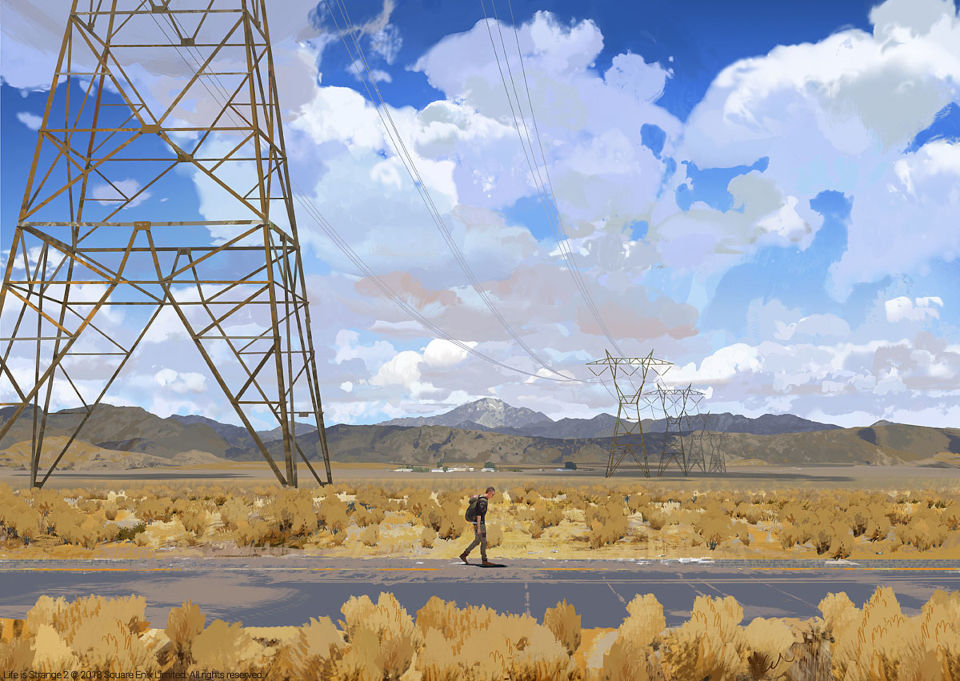
9. Put your pen down and have a rest
Some illustrations take a while to make, whether it’s a couple of days or even longer. With time passing so quickly and your eyes seeing the same image every hour, it’s easy to get used to the mistakes you made along the way. Sure, some can look cool in the end, but you might not feel the same way about others.
After getting up from your PC in the evening and sleeping, the rest you get may not be enough to spot the actual mistakes.
So don’t hesitate to leave your work alone for a while. Go outside, look at other things like artworks, architecture or nature—you may even get inspired before getting back to your drawing with fresh eyes.
You’ll have a new perspective, and you’ll begin to see things you probably shouldn’t have spent that much time on, along with some new parts you kind of forgot to take care of.
From Edouard Caplain
Edouard Caplain is a concept artist and art director based in Paris, France. He is famous for his work on the Life Is Strange series, where he worked as the lead concept artist for the second game and brought Blackwell Academy to life in the first back in 2015.
Please consider donating to perephoneia.art if you’ve learned something new. Your support helps cover the hosting costs for the website, keeping it free and online for others to discover.
